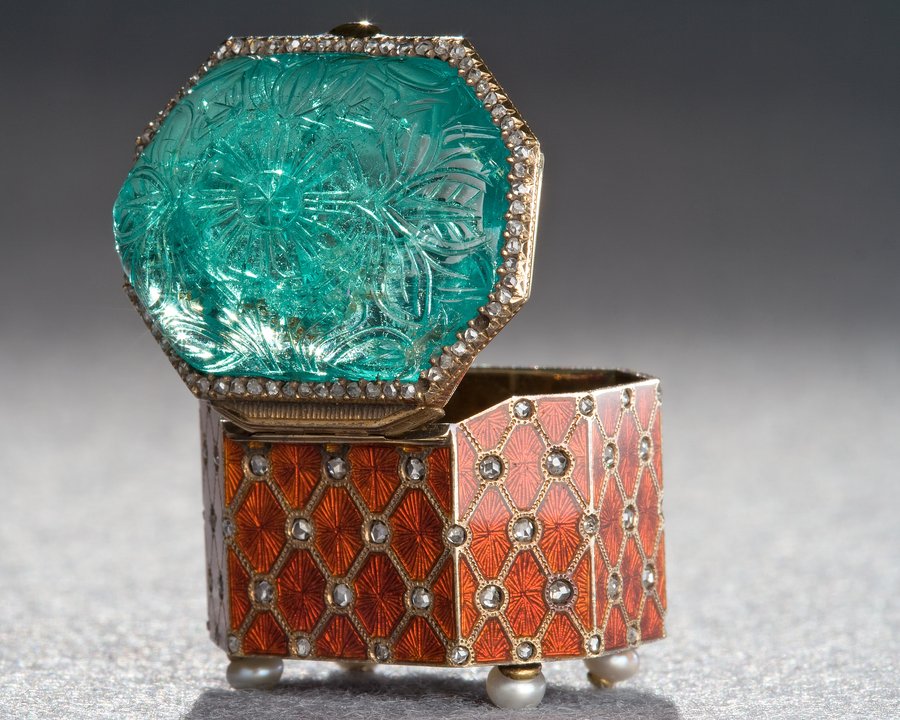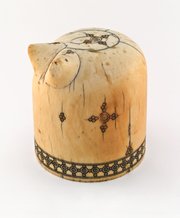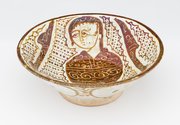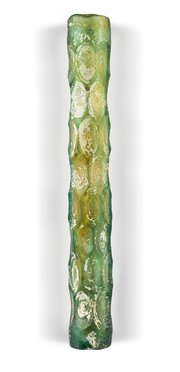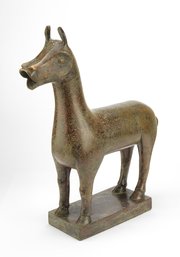
Gold Box
Museum of Islamic Art
- Title:
- Gold Box
- Production place:
- India
- Date:
- 1700 - 1899
- Period:
- Mughal
- Title:
- Gold Box
- Production place:
- India
- Date:
- 1700 - 1899
- Period:
- Mughal
- Material:
- Emerald, Diamond, Enamel, Pearl, Gold, Solder
- Technique:
- Gem setting, Enamelling, Gem cutting, Carving, Engraving, Soldering
- Dimensions:
- 2.9 × 2.2
- Diameter:
- 3.1
This exquisite little enamelled and gem-set gold box is unique for both its size and execution. Octagonal in shape, it delicately rests on four small, fresh water pearls as feet. The external sides of the box are entirely decorated with diamonds set within a diamond-hatched metalwork pattern and 'sunburst' enamelling. The box's lid is comprised of an earlier 12th century AH/18th century CE Mughal emerald of Columbian origin, itself carved delicately with a single floral spray, surrounded by a band of seventy-two diamonds. The exceptional detail of this 13th century AH/19th century CE box is attributed to the Russian goldsmith Michail Perchin (1276-1321 AH/1860-1903 CE), who was regarded as one of Fabergé's most important masters. Throughout the 13th century AH/19th century CE, Fabergé established an international name for himself; known for melding exquisitely executed enamelling with exceptionally well-crafted designs, Fabergé went on to inspire other jewellery houses, such as Cartier, to start imitating similar designs. This box epitomizes Fabergé's distinctive style, and was most probably used as a pill container.
